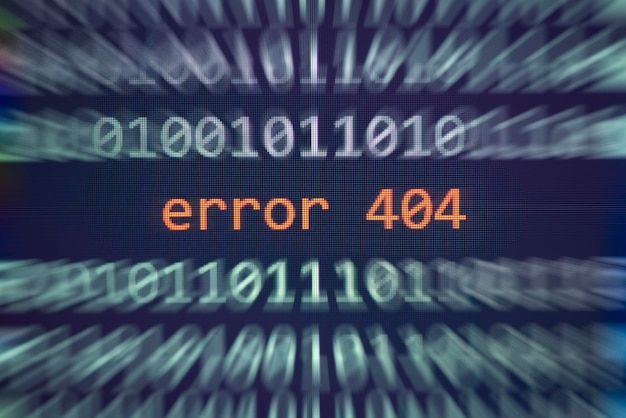Have you ever encountered a frustrating program crash that left you scratching your head?
Python error handling is the heroic solution to save your code from unexpected failures.
In this article, we’ll delve into the essential approaches and best practices needed to master error management in Python.
From understanding the difference between errors and exceptions to implementing robust structured techniques like try-except blocks, you’ll learn how to enhance your coding skills and user experience.
Join us as we explore the world of Python error handling and equip you with the tools to write resilient code.
Python Error Handling: An Overview
Python error handling is key for managing issues during program execution. It provides developers with mechanisms to address problems without crashing the program, ultimately enhancing the user experience.
Understanding the distinction between errors and exceptions is fundamental.
-
Errors: These are critical issues that can halt execution, such as syntax errors or out-of-memory situations. Errors typically require the programmer to amend the code directly, as they indicate serious faults in the application.
-
Exceptions: Unlike errors, exceptions are conditions that can be caught and handled within the program. They allow the program to continue running, even in the presence of unexpected problems.
Structured error handling strategies are vital for robust coding practices.
The most common methods include:
-
try-except blocks: This mechanism allows developers to write code that can handle exceptions gracefully. Code placed in the try block is executed, and if an exception occurs, control is passed to the corresponding except block.
-
raise statement: This is used to trigger exceptions manually, enabling developers to create custom error messages or handle specific error conditions.
Adopting best practices for error handling is crucial for maintaining code quality. This includes:
- Catching specific exceptions rather than using catch-all approaches.
- Logging errors for future review while avoiding exposing sensitive information to users.
- Ensuring that cleanup actions are performed using the finally block to free resources consistently.
By embracing these strategies, developers can create more reliable and user-friendly applications.
Techniques of Python Error Handling
W Pythonie podstawowym mechanizmem do wychwytywania i obsługi wyjątków jest blok try-except.
W bloku try umieszczamy kod, który może potencjalnie wywołać wyjątek. Jeżeli w tym kodzie wystąpi błąd, przepływ sterowania przechodzi do odpowiadającego bloku except, gdzie możemy zaimplementować odpowiednie działania naprawcze. Taki sposób obsługi wyjątków pozwala na kontynuowanie działania programu bez jego zatrzymywania.
Przykład zastosowania bloku try-except:
try:
# potencjalnie problematyczny kod
x = 10 / 0
except ZeroDivisionError:
print("Nie można dzielić przez zero.")
Inną istotną techniką jest podnoszenie wyjątków poprzez użycie instrukcji raise. Umożliwia to sygnalizowanie problemów, które muszą być rozwiązane przez wywołującego. Jest to szczególnie przydatne, gdy tworzymy własne funkcje i chcemy zapewnić, że nieprawidłowe dane wejściowe będą odpowiednio obsługiwane.
Przykład podnoszenia wyjątku:
def podziel(a, b):
if b == 0:
raise ValueError("Nie można dzielić przez zero!")
return a / b
Kolejnym istotnym narzędziem w obsłudze błędów jest blok finally. Blok ten jest wykonywany niezależnie od tego, czy wystąpił wyjątek, czy nie. Służy do przeprowadzania akcji porządkowych, takich jak zamykanie plików czy zwalnianie zasobów:
try:
# kod, który może wywołać wyjątek
file = open("test.txt", "r")
except FileNotFoundError:
print("Plik nie został znaleziony.")
finally:
file.close()
Logowanie błędów to kolejna technika, która pozwala na systematyczne śledzenie problemów bez eksponowania informacji poufnych. Użycie modułu logging pozwala na rejestrowanie błędów i ich analizę w późniejszym czasie, co ułatwia diagnozę i naprawę.
Zastosowanie tych technik zapewnia strukturalne podejście do obsługi błędów, zwiększając niezawodność aplikacji w Pythonie.
Error Types and Custom Exceptions in Python
Python provides a variety of built-in exceptions that facilitate error management during program execution. These built-in exceptions include:
- ValueError
- ZeroDivisionError
- TypeError
- IndexError
These exceptions help to handle common error scenarios effectively, allowing developers to write robust code that can respond to standard issues.
In addition to built-in exceptions, developers can implement custom exceptions to tailor error handling to their specific application needs. To define a custom exception, you create a new class that inherits from the built-in Exception class. Here’s a simple example:
class MyCustomError(Exception):
pass
This creates a user-defined exception that can be raised as needed, improving the clarity of error messages and allowing specific conditions to be handled appropriately.
The advantages of using custom exceptions include enhanced code maintenance and improved debugging practices. By defining exceptions that reflect the unique constraints and requirements of your application, you can provide clearer feedback when errors occur, ultimately simplifying troubleshooting.
Custom exceptions also increase readability, making it easier for other developers to understand the types of errors your application may encounter. This practice encourages a structured approach to error handling, enabling more efficient development processes and a better user experience.
Best Practices for Python Error Handling
Stosowanie najlepszych praktyk w zakresie obsługi błędów znacznie poprawia stabilność oprogramowania. Kluczowe elementy obejmują:
-
Catching Specific Exceptions: Zamiast korzystać z ogólnych uchwytów, które mogą ukrywać rzeczywiste problemy, skup się na przechwytywaniu konkretnych wyjątków. To pozwala na lepsze zrozumienie, co poszło nie tak, i odpowiednie działanie.
-
Input Validation: Weryfikacja danych wejściowych to kluczowa strategia zapobiegająca błędom. Sprawdzaj dane użytkowników, aby upewnić się, że spełniają oczekiwania przed wykonaniem operacji. Umożliwia to zidentyfikowanie i rozwiązanie potencjalnych problemów, zanim wystąpią.
-
Error Recovery Strategies: Zaprojektuj strategie odzyskiwania z błędów, aby niewłaściwe sytuacje mogły być zarządzane w sposób kontrolowany. Obejmuje to działania naprawcze lub ponowne próby wykonania.
-
Handling Multiple Exceptions: Aby efektywnie zarządzać wieloma wyjątkami, korzystaj z krotek w instrukcjach try-except. Pozwala to na wyraźne określenie, jakie typy wyjątków są przechwytywane przez dany blok. Przykład:
try:
# kod do wykonania
except (TypeError, ValueError) as e:
# obsługuje wyjątek
-
Structured Exception Handling: Zastosuj uporządkowaną obsługę wyjątków, korzystając z bloków try, except, else i finally. Dzięki temu możesz wyraźnie zdefiniować logikę przebiegu programu oraz działania w przypadku błędów.
-
Logging: Wdrożenie mechanizmów logującego do rejestrowania błędów i wyjątków. Umożliwia to późniejsze analizowanie problemów bez ujawniania wrażliwych danych użytkownikom.
Stosowanie tych najlepszych praktyk w codziennej pracy nad kodem przyczyni się do zwiększenia jakości i niezawodności aplikacji w Pythonie.
Debugging and Logging Errors in Python
Debugging is a critical component of effective error handling in Python. When an error occurs, Python provides detailed tracebacks that help developers identify the source of the problem. A traceback outlines the function calls that led to the error, providing valuable context about where and why an issue arose.
The structure of a typical Python traceback includes the file name, line number, and the actual error message along with the offending line of code. By analyzing this information, developers can pinpoint the exact location of the error and understand the sequence of execution leading up to it.
The use of logging libraries in Python enhances the error debugging process significantly. The logging module allows developers to create logs of error messages along with relevant information, such as timestamps and severity levels. These logs can be configured to output to various destinations such as the console, files, or remote servers, providing flexibility for different environments.
Developers can adjust log levels—such as DEBUG, INFO, WARNING, ERROR, and CRITICAL—to control what gets recorded. This selective logging ensures that critical errors receive immediate attention, while less severe messages do not overwhelm standard output. Here’s how common log levels can be structured:
| Log Level | Description |
|---|---|
| DEBUG | Detailed information, typically useful for diagnosing issues. |
| INFO | General information about the application’s operation. |
| WARNING | Indicates something unexpected occurred, or an issue may arise. |
| ERROR | A serious issue that prevented a function from executing. |
| CRITICAL | A very serious error that may prevent the program from continuing. |
Using logging libraries not only supports debugging during development but also aids in maintaining a detailed record for future reference, which ultimately improves software quality and maintainability. An effective logging strategy can significantly reduce the effort required for troubleshooting and enhance visibility into software performance.
Python Error Handling in Real-World Applications
W rzeczywistych aplikacjach efektywne zarządzanie błędami jest kluczowe dla utrzymania funkcjonalności aplikacji i doświadczenia użytkownika.
W kontekście aplikacji internetowych, błędy mogą wystąpić w różnych punktach, na przykład w warstwie front-endu czy serwera.
Dobrze zdefiniowane mechanizmy obsługi błędów pomagają w szybkiej identyfikacji i naprawie problemów, co z kolei zwiększa stabilność aplikacji.
Oto kilka typowych scenariuszy:
-
Obsługa błędów w aplikacjach webowych:
-
Zastosowanie bloków try/except do zarządzania wyjątkami związanymi z błędnymi żądaniami użytkownika.
-
Wyświetlanie przyjaznych dla użytkownika komunikatów o błędach zamiast surowych informacji z serwera.
-
Obsługa błędów w bazach danych:
-
Właściwe zarządzanie wyjątkiem, gdy żądanie do bazy danych się nie powiedzie, np. z powodu błędnych zapytań SQL.
-
Zastosowanie transakcji do przywracania spójności danych w przypadku błędów.
Zarządzanie błędami wpływa również na wydajność aplikacji.
Zbyt skomplikowane lub niewłaściwe techniki obsługi błędów mogą prowadzić do spadku wydajności, spowolnienia działania i zwiększenia obciążenia serwera.
Oto ogólne wytyczne dotyczące wprowadzenia skutecznej obsługi błędów:
- Unikaj przeładowania skomplikowanymi blokami try/except, stosując je tam, gdzie to konieczne.
- Loguj błędy, by analizować je w późniejszym czasie i reagować na nie na podstawie historii.
- Wykorzystuj konkretne wyjątki, aby szybko reagować na typowe problemy.
Poprawne zarządzanie błędami w aplikacjach internetowych i bazach danych w znacznym stopniu przyczynia się do ich stabilności i wydajności.
Understanding Python error handling is crucial for effective programming.
We explored different types of errors, including syntax and runtime errors.
Various techniques such as try-except statements were discussed to manage exceptions and ensure smoother code execution.
By implementing these strategies, developers can enhance their ability to troubleshoot problems efficiently.
Mastering Python error handling not only makes your code robust but also cultivates a deeper understanding of programming concepts.
Embracing these practices sets the stage for more confident and successful coding experiences.
FAQ
Q: What are the two main styles of error handling in Python?
A: The two main styles are “Look Before You Leap” (LBYL) and “Easier to Ask Forgiveness than Permission” (EAFP). LBYL checks conditions before executing, while EAFP performs actions and handles errors afterward.
Q: What is the difference between errors and exceptions in Python?
A: Errors are critical issues that halt execution, whereas exceptions are conditions that can be caught and handled, allowing the program to continue running.
Q: How do you handle exceptions in Python using try and except?
A: The try block contains code that may raise an exception. If an exception occurs, control moves to the except block to manage the error without crashing the program.
Q: Can you use else and finally blocks with try and except?
A: Yes, the else block executes if no exception occurs, while the finally block runs regardless of whether an exception was raised, often used for cleanup actions.
Q: How can you catch multiple exceptions in a single try-except block?
A: Multiple exceptions can be caught by using a tuple of exception types in the except statement, allowing for flexible error handling.
Q: What happens if an exception is not caught?
A: If an exception is not caught, it propagates up the call stack, which can terminate the program and display a traceback to help with debugging.
Q: Can you re-raise an exception after catching it?
A: Yes, you can re-raise an exception after catching it to log it or perform other actions before it continues to propagate.
Q: What are common built-in exceptions in Python?
A: Common built-in exceptions include ZeroDivisionError, ValueError, TypeError, and IndexError, each indicating specific error conditions that programmers can account for.


